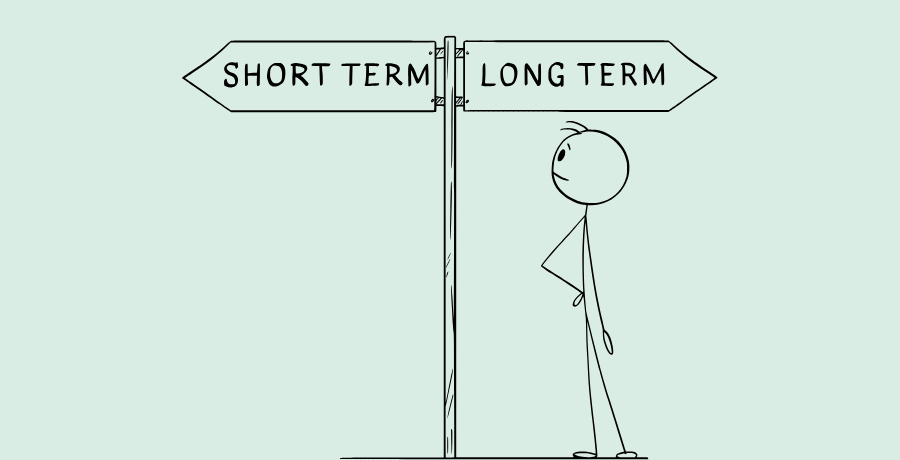Disclaimer: We will receive a commission if you make a purchase through our affiliate link at no extra cost to you. Please read our disclosure policy for more information.
Alright, let's be honest—investing can feel like a big, scary concept at first. Terms like "portfolio diversification," "index funds," and "compounding interest" might make you want to turn and run the other way. And don’t even get me started on the myth that "investing is only for the rich." Here’s the real deal: investing is for anyone who wants to build financial security, and it doesn’t take a trust fund to get started. In fact, you can start investing with a small amount each month, and over time, those little contributions can grow into something substantial. Imagine it like planting a seed; with a bit of patience and care, that seed has the potential to grow into a sturdy tree.
So, how can you get started on your investing journey without feeling overwhelmed? In this guide, I’ll break it down step-by-step, offering a practical path to start building wealth. Let’s get to it!
Table of Contents
Why Should You Start Investing?
- Wealth Building Over Time
- Protection Against Inflation
- Achieving Financial Goals
Key Investment Terms for Beginners
- Stocks
- Bonds
- Mutual Funds and ETFs
Setting Your Financial Goals and Time Horizon
- Short-term vs. Long-term Goals
- Assessing Risk Tolerance
How to Start Investing with a Small Amount
- Steps to Begin with Small Investments
Long-term Strategies for Building Wealth
- The Buy-and-Hold Strategy
- Compound Interest: The Ultimate Secret
Why Should You Start Investing?

Let’s kick things off with a question: Why bother investing in the first place? Why not just stick to a regular savings account? Here are a few powerful reasons to consider:
1. Wealth Building Over Time
When you invest, you’re giving your money the potential to grow. Think of it this way: money sitting in a savings account is like water left in a bucket. It just sits there. But money invested in assets (like stocks, bonds, or real estate) is like a flowing stream—it has the potential to increase and build wealth over time.
Fun Fact: If you invested $100 a month at an 8% average return, you’d have around $150,000 in 30 years. That’s the magic of compounding!
2. Protection Against Inflation
Inflation, simply put, is the gradual increase in prices over time. So, the money you put aside today may not be able to buy the same amount of goods in the future. By investing, you can help your money grow at a rate that (hopefully) keeps up with or outpaces inflation.
3. Achieving Financial Goals
Investing can help you reach big financial goals, like buying a home, paying for education, or retiring comfortably. It’s a way of building up a "freedom fund" for whatever life may bring.
Key Investment Terms for Beginners

Before diving into investments, let’s clarify some key terms. Think of this as learning a few basic moves before starting a new sport.
Stocks
Stocks are essentially tiny ownership pieces of a company. When you buy a stock, you’re buying a small part of that company. If the company does well, your stock may increase in value. However, if it performs poorly, the stock value can decrease, so there’s always a risk. Stocks have high growth potential, but they’re also more volatile (prices fluctuate).
Bonds
Bonds are essentially loans you give to companies or governments in exchange for interest payments over time. Bonds are generally safer than stocks because they come with a promise to pay you back with interest. They’re often seen as a more stable investment option.
Mutual Funds and ETFs (Exchange-Traded Funds)
Mutual funds and ETFs allow you to invest in a diversified "basket" of stocks, bonds, or other assets. They’re great options for beginners because they automatically spread your money across multiple investments, lowering the risk.

Setting Your Financial Goals and Time Horizon

It’s important to have clear financial goals before you start investing. Ask yourself what you’re investing for and how long you plan to keep your money invested.
Short-term vs. Long-term Goals
- Short-term Goals (1-3 years): Saving for a vacation or emergency fund? Consider safer options, like bonds or high-yield savings accounts.
- Long-term Goals (5+ years): Thinking about retirement or a down payment on a house? Here, you can afford to take on more risk with stocks or real estate since time is on your side.
Assessing Risk Tolerance
Think about how comfortable you are with the ups and downs of the market. If market dips make you anxious, you might prefer safer investments like bonds. If you’re okay with some fluctuations for potentially higher returns, then stocks might be suitable for you.
How to Start Investing with a Small Amount

Here’s a truth bomb: You don’t need to be rich to start investing. In fact, many investment platforms and apps today let you start with just $10 or $20.
Steps to Begin with Small Investments
- Build an Emergency Fund First: Before diving into the market, save a few months’ worth of expenses as a safety net. Life happens—whether it’s car repairs or medical bills, and this will give you peace of mind.
- Choose a Platform: Platforms like Robinhood, MooMoo, or Fidelity let you invest with low or no fees.
Try Robo-Advisors: Robo-advisors (like Betterment or Wealthfront) can create a balanced portfolio for you based on your goals and risk tolerance.
And remember, just because you’re starting small doesn’t mean your investment journey won’t lead to something big. Over time, even modest investments can add up significantly.
Common Beginner Mistakes to Avoid
Everyone makes mistakes when they start, but here are a few common ones that you can steer clear of:
- Chasing Hot Stocks: It can be tempting to invest in the latest popular stock, but it’s usually riskier than it seems. Stick to your plan and focus on diversified assets instead.
- Overreacting to Market Fluctuations: Markets naturally go up and down. When you invest for the long term, try not to panic during downturns. In fact, downturns can sometimes be a good time to buy at lower prices.
- Ignoring Fees: Even small fees can eat into your returns over time. Make sure you’re aware of any costs associated with your investments.
Long-term Strategies for Building Wealth

Once you have your basics down, it’s time to look at strategies that can help grow your investments over time.
The Buy-and-Hold Strategy
This strategy involves buying stocks or funds and holding onto them for years. Studies show that holding onto investments generally outperforms frequent trading. It’s a bit like planting a tree—you plant it and let it grow over time, rather than constantly digging it up to check the roots.
Compound Interest: The Ultimate Secret
Compounding means that the returns on your investments generate more returns over time. Imagine earning interest not just on your initial investment, but on the interest itself. This effect can create powerful growth over decades.
Example: If you invest $1,000 at an average annual return of 8%, after 30 years, that money would grow to around $10,000 without you adding another cent.
Keep Learning and Stay Informed

Investing isn’t a one-time decision—it’s a journey. The more you learn, the more confident you’ll feel. Here are a few ways to keep building your knowledge:
- Read Books: Books like The Intelligent Investor by Benjamin Graham or A Random Walk Down Wall Street by Burton Malkiel are great starting points. You can find more books not only about investing, but about finance in general in our post: 10 Best Financial Books Everyone Should Read.
- Practice with Simulators: Some apps offer virtual trading accounts so you can practice without using real money.
- Listen to Podcasts and Take Courses: Many podcasts and online courses (check out Coursera or Udemy) offer valuable insights for beginner investors.
Patience, Consistency, and Trusting the Process

Investing isn’t a get-rich-quick scheme. It’s more like a long hike—there are ups, downs, and maybe some unexpected weather, but as long as you stay the course, you’ll make steady progress. Here are a few things to keep in mind:
- Start Small, but Start Now: The earlier you start, the more time your investments have to grow. Even if you start small, regular investing can have a big impact over time.
- Stay Calm During Market Dips: Markets naturally fluctuate. Don’t let short-term drops scare you into making impulsive decisions.
- Stick to Your Plan: If you’ve done your research and set your goals, trust your plan and keep moving forward, one investment at a time.
Investing doesn’t have to be complicated, and it’s not only for the wealthy. It’s simply a tool for anyone who wants to build a better financial future. Start where you are, keep learning, and trust the process—you’ve got this!



